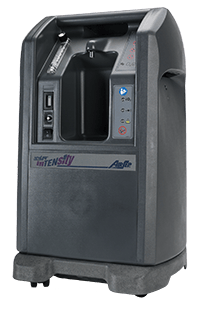
If you’re helping your retired parent manage their finances, one thing you don’t want to overlook is the required minimum distribution (RMD). These mandatory withdrawals must be taken from certain retirement accounts each year once a person reaches a specific age.
Failing to take an RMD on time can lead to steep IRS penalties — up to 25% of the amount that should have been withdrawn. That kind of mistake can throw off a parent’s financial plans and cause a lot of unnecessary stress. Fortunately, with a little bit of knowledge and a clear game plan, you can help make sure everything gets done on time.
Here’s what you need to know and do.
What is an RMD, and why does it matter?
An RMD is the minimum amount the IRS requires someone to withdraw from most retirement accounts each year once they reach a certain age. These accounts include:
- Traditional IRAs.
- 401(k)s and 403(b)s.
- SEP and SIMPLE IRAs.
- Other employer-sponsored retirement plans.
Why does the IRS care? Because these accounts were funded with pre-tax dollars, and the government eventually wants its share. When retirees start taking RMDs, they pay income taxes on those distributions.
Missing an RMD deadline can be expensive. The penalty is 25% of the amount not withdrawn, though it may be reduced to 10% if corrected promptly. Either way, it’s a mistake worth avoiding.
Now let’s go through the steps you should take when helping your parent with their RMDs.
Step 1: Understand if RMDs apply to your parent
First, confirm whether your parent has retirement accounts that are subject to RMDs. Most traditional IRAs and 401(k)s fall under these rules. Roth IRAs and Roth 401(k)s don’t require RMDs during the original owner’s lifetime.
If your parent isn’t sure what types of accounts they have, sit down with them and go through their paperwork or online accounts. If they work with a financial advisor, that person can quickly confirm this information for you.
Step 2: Know when they need to start taking RMDs
The age at which RMDs must begin has changed over time. As of now:
- If your parent turned 73 in 2024, they must take their first RMD by April 1, 2025.
- After the first year, RMDs must be taken by December 31 every year.
Be cautious with that April 1 deadline: Waiting until April to take the first RMD means they’ll have to take two RMDs in one calendar year, which could increase their taxable income and their tax bill.
Mark those deadlines clearly. If your parent is already 73 or older, check that they’ve been taking RMDs every year. If not, they may need to correct the situation right away.
Step 3: Make sure you’re allowed to help your parent
You can’t just call up a bank or investment firm and make changes to someone else’s account — not even if it’s your parent. You’ll need the proper authority.
Here are a few ways to make sure you can help:
- Power of attorney (POA): If your parent has a financial POA in place and you’re the designated agent, you can legally manage their financial affairs, including RMDs.
- Verbal authorization: Some financial institutions allow your parent to authorize you to discuss their finances over the phone or in person, as long as your parent is present.
- Be present for calls or meetings: If your parent is still capable and prefers to manage things themselves, you can still be helpful by joining them during calls or meetings to offer support and take notes.
Don’t wait until the end of the year to find out you’re not authorized. Get this squared away early.
Step 4: Gather the right information
Next, help your parent get organized. You’ll need the following:
- A list of retirement accounts subject to RMDs.
- Login credentials for online accounts (if your parent is comfortable sharing).
- Recent account statements.
- Their Social Security number (if requested by the institution).
- Contact info for their financial advisor or plan administrator.
You may want to create a checklist or binder with this info to keep everything in one place. If your parent prefers digital tools, a secure password manager or spreadsheet can help.
Step 5: Consult a financial advisor (if available)
If your parent already works with a financial advisor, this is the time to use that resource. Advisors can help:
- Calculate the exact RMD for each account.
- Explain the tax implications.
- Suggest which accounts to withdraw from first.
- Coordinate the timing of distributions to avoid surprises.
The RMD amount is based on the account balance on December 31 of the previous year and a life expectancy factor provided by the IRS. It’s not difficult to calculate if you’re comfortable with numbers, but it’s also easy to make mistakes, especially if there are multiple accounts involved.
If your parent doesn’t have a financial advisor, consider calling the financial institutions that hold their retirement accounts. Many will calculate the RMD for you.
Step 6: Help your parent make the withdrawal
Once the amount has been calculated, it’s time to arrange the withdrawal. This can usually be done:
- Online through the account portal.
- By phone with a representative.
- In person at a branch or office.
You may also want to discuss tax withholding. RMDs count as ordinary income, so your parent may choose to have federal (and possibly state) taxes withheld at the time of withdrawal to avoid a large tax bill later.
Some institutions offer automatic RMD withdrawals each year. Setting this up can make future years a lot easier.
Step 7: Keep records and plan for next year
Once the distribution is made, save all confirmation emails, transaction records, and account statements. You may need them when preparing taxes. If your parent uses a tax preparer, send this information over as soon as possible.
Then, set a reminder for next year’s RMD. The December 31 deadline comes quickly, and some families don’t realize they’ve missed it until it’s too late.
Step 8: Repeat for each account
If your parent has multiple retirement accounts, you’ll need to address each one. Here’s the general rule:
- Traditional IRAs: You can calculate one combined RMD and take the total from any one or more of the accounts.
- 401(k)s: You must take the RMD from each 401(k) account separately.
Again, a financial advisor or the account provider can help you sort this out.
Final thoughts on helping a parent with their RMDs
Helping a parent with RMDs might feel overwhelming at first, especially if you’re not familiar with financial lingo, but after you’ve gone through the process once, it gets easier each year. By being proactive, organized, and supportive, you’re doing more than just avoiding IRS penalties — you’re helping protect your parents’ financial well-being in retirement.
This information is for educational purposes and is not legal, financial, tax, or investment advice. It should not be substituted for information from professionals authorized to practice in your area. You should always consult a suitably qualified professional regarding your specific situation.








